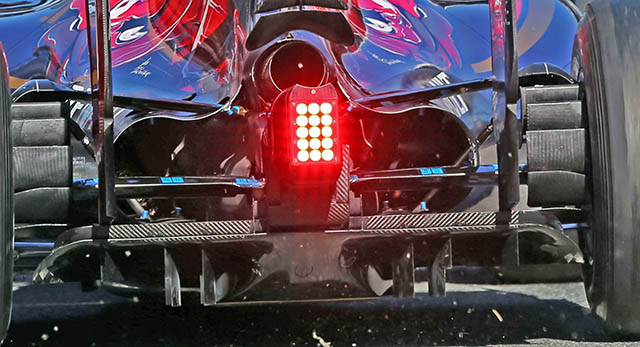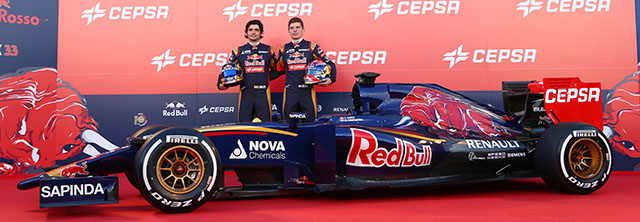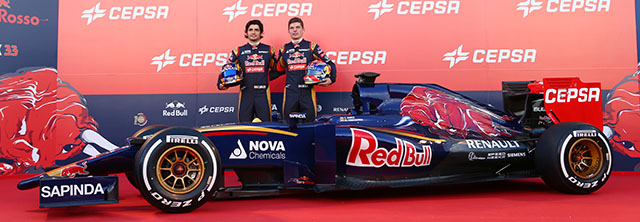
“The car is a real mix of very different approaches in some areas, while also refining and developing what we felt were some of the more solid philosophies of the 2014 car,” says Technical Director James Key of the Toro Rosso STR10.
“It will look quite different by the time we get to Race 1 and we’ve got several very new ideas which have gone into it, which the team is exploring for the first time, which makes it an interesting project.
We’ve pushed the limits of timing much more with STR10 than with passed cars and we’re dealing with it really well. We have a pretty aggressive plan for development. We’ll turn up to Race 1 with a fundamentally different car to the one we run in testing.
It sounds a bit odd given that there are only three pre-season tests, but you’ve got to start off with getting all the basics pinned down on the chassis side, allowing the drivers to run and then the refinements and performance bits will begin to pop up in Test 3 and Race 1, so the car we launch is not the car we’ll be racing in Melbourne. After that, we will continue to push hard on development throughout the season.
The team has an increasingly new look in both our Faenza HQ and facility in Bicester, UK. We have done a fair bit of re-structuring in 2014 and brought many new and experienced people on board as well as internally promoting to cover new key positions.
Our facilities are also continuously improving. The STR10 will be the first car designed with most of the planned STR technical structure in place, the motivation is high within the team right now and a lot of hard work is being covered.”
The Toro Rosso utilises many shared transmission and hydraulic components with Red Bull Racing as well as the general engine installation. But the bell housing and main case are unique to Toro Rosso and made in Italy. All new rear suspension mounts to that gear case details of which are not yet clear but Key hints that it is a major area of development.
Toro Rosso has made a major step with its cooling system design and is employing a new type of radiator core on the STR10.
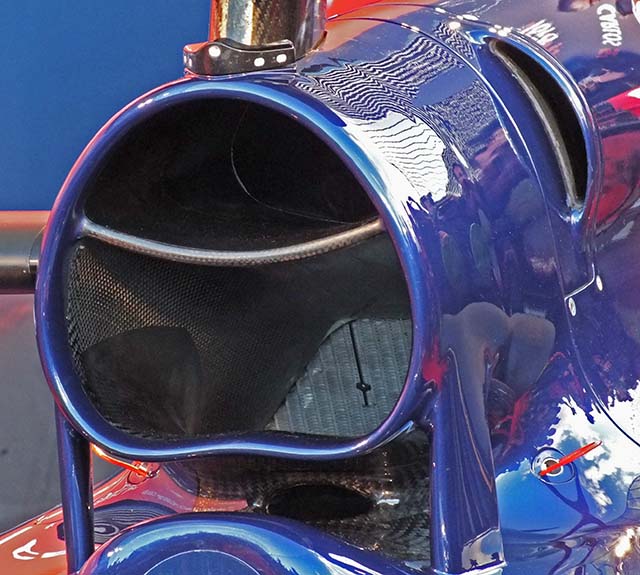
An immediately obvious feature on the Toro Rosso is the huge duct mounted on its roll hoop. In reality there are actually five separate ducts. The uppermost duct in the roll hoop the car feeds combustion air to the Renault V6, while the large duct beneath it feeds a heat exchanger mounted right at the top of the chassis (and visible in this picture) A much smaller duct sits directly behind the drivers head and is thought to cool some electrical systems.
Finally on the outer edge of the roll hoop there are two small cooling ears feeding air to the rear of the engine bay. This extra cooler in the roll hoop is a concept seen on previous Toro Rosso’s including the STR9 (below).
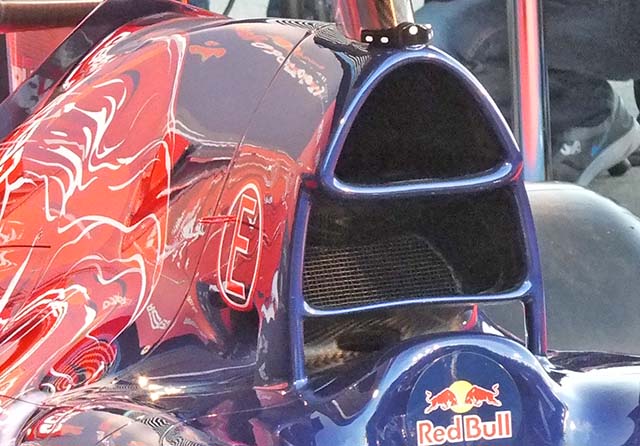
A look at the rear end of the Toro Rosso (below), note the very steep angle of the pull rods on the rear suspension. From the front the routing of the pull rod is interesting as it appears to pass through the body work and on down to the floor of the car. James Key indicated that this is a key area of the car. Note the remaining flow vis on the rear of the car – evidence of aero testing on track (below).
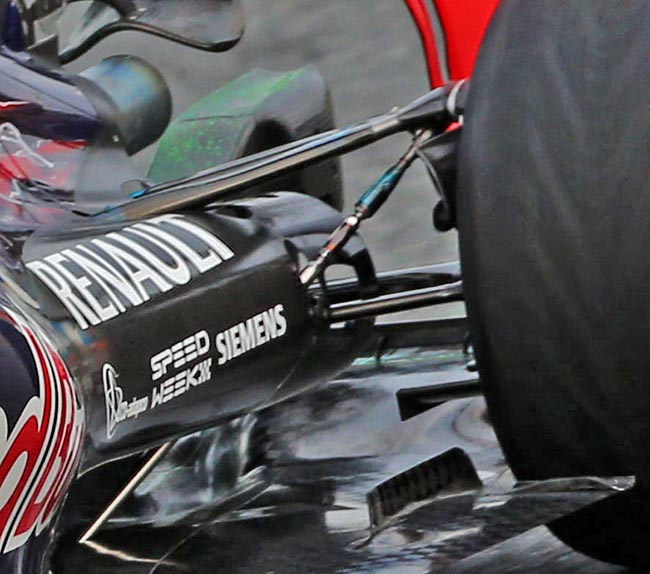
A look at the rear suspension from above shows the shape of the wishbones and the upper outboard mounting points.
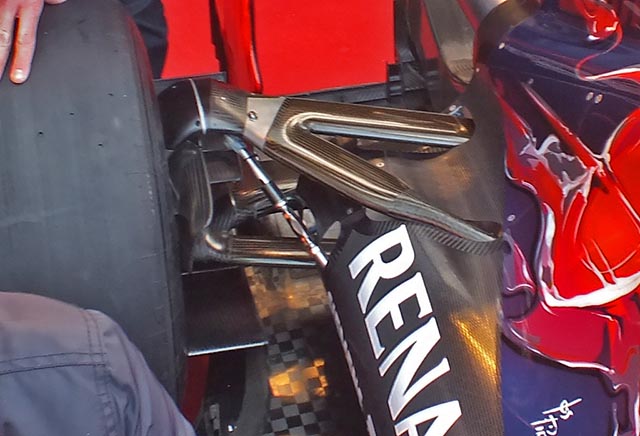
One of Toro Rosso’s aero runs at Jerez was spoilt by a plastic bag picked up in the rear suspension.
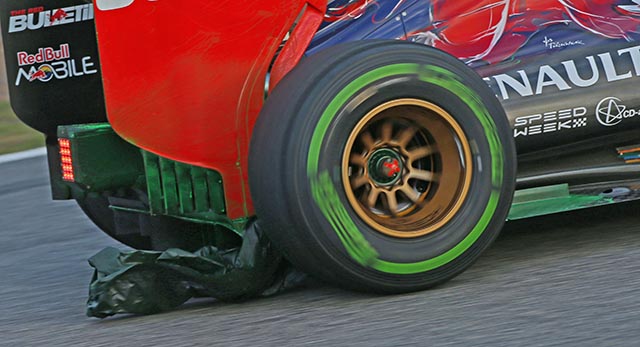 A look at the diffuser on the STR10 (below), note the angle of the pull rods
A look at the diffuser on the STR10 (below), note the angle of the pull rods
